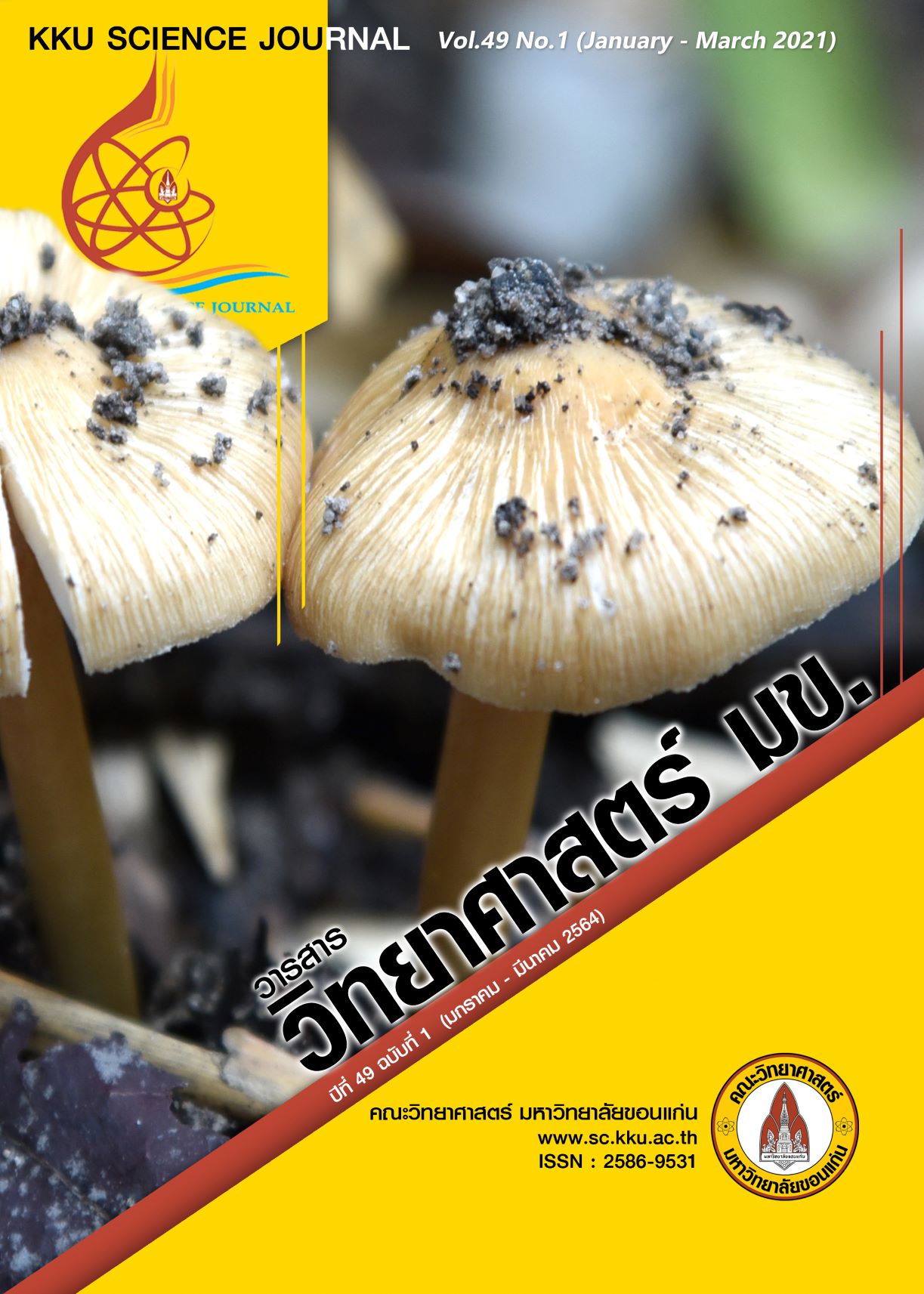Cloning of 1,3-Propanediol dehydrogenase-encoding gene from Lactobacillus buchneri
Main Article Content
Abstract
Nowadays, Biofuel industry is growing rapidly, resulting in an increasing level of glycerol which is a byproduct from biofuel production. Glycerol can be converted to 1,3-Propanediol (1,3-PD) which is a chemical precursor presenting in many industrial applications. In microbial metabolic pathway, dhaT encodes 1,3-Propanediol dehydrogenase (1,3-PDH), which leads to synthesis of 1,3-PD. In this study, dhaT gene from Lactobacillus buchneri was amplified by polymerase chain reaction (PCR), then inserted into expression vector pET-28a(+) and subsequently introduced into Escherichia coli BL21. The correct transformants were screened by colony PCR and recombinant plasmid was isolated and sequenced. The result showed that the dhaT gene from L. buchneri was successfully cloned. The activity of 1,3-PDH was 154.228 mU/ml in recombinant E. coli while the activity of the same enzyme was 208.793 mU/ml in L. buchneri. The results suggest that the dhaT gene was successfully expressed in this work and might provide further knowledge to develop genetically engineered Escherichia coli strain for producing 1,3-PD from glycerol in the future.
Article Details

This work is licensed under a Creative Commons Attribution-NonCommercial-NoDerivatives 4.0 International License.
References
Ahrens, K., Menzel, K., Zeng, A. and Deckwer, W. (1998). Kinetic, dynamic, and pathway studies of glycerol metabolism by Klebsiella pneumoniae in anaerobic continuous culture: III. Enzymes and fluxes of glycerol dissimilation and 1 , 3 -propanediol formation. Biotechnology and Bioengineering 59(5): 544-552.
Biebl, H., Menzel, K., Zeng, A. and Deckwer, W. (1999). Microbial production of 1,3-propanediol. Applied Microbiology and Biotechnology 52(3): 289-297.
Fenghuan, W., Huijin, Q., He, H. and Tan, T. (2005). High-Level Expression of the 1,3-Propanediol Oxidoreductase from Klebsiella pneumoniae in Escherichia coli. Molecular Biotechnology 31(3): 211-220.
Froger, A. and Hall, J. E. (2007). Transformation of plasmid DNA into E. coli using the heat shock method. Journal of visualized experiments (6): 253.
Liu, H., Ou, X., Zhou, S., and Liu, D. (2009). Microbial 1,3-Propanediol, Its Copolymerization with Terephthalate, and Applications. Microbiology Monographs Plastics from Bacteria 405-425.
de Man, J. C., Rogosa, M. and Sharpe, M. E. (1960). A Medium for the Cultivation of Lactobacilli. Journal of Applied Bacteriology (23): 130–135.
Maervoet, V. E., Mey, M. D., Beauprez, J., Maeseneire, S. D. and Soetaert, W. K. (2011). Enhancing the Microbial Conversion of Glycerol to 1,3-Propanediol Using Metabolic Engineering. Organic Process Research & Development 15(1): 189-202.
Przystałowska, H., Zeyland, J., Szymanowska-Powałowska, D., Szalata, M., Słomski, R., Lipiński, D. (2015). 1 , 3 -Propanediol production by new recombinant Escherichia coli containing genes from pathogenic bacteria. Microbiological Research 171: 1-7.
Rodríguez, I., Fraga, J., Noda, A. A., Mayet, M., Duarte, Y., Echevarria, E. and Fernández, C. (2014). An Alternative and Rapid Method for the Extraction of Nucleic Acids from Ixodid Ticks by Potassium Acetate Procedure. Brazilian Archives of Biology and Technology 57(4): 542-547.
Skraly, F. A., Lytle, B. L., Cameron, D. C. (1998). Construction and characterization of a 1,3-propanediol operon. Applied and Environmental Microbiology 64: 98-105. Studier, F. W. (2014). Stable expression clones and auto-induction for protein production in E. coli. Methods in Molecular Biology 1091: 17-32.
Veiga-da-Cunha, M. and Foster, M. A. (1992). 1,3-Propanediol: NAD+oxidoreductases of Lactobacillus brevis and Lactobacillus buchneri. Applied and Environmental Microbiology 58(6): 2005-2010.


